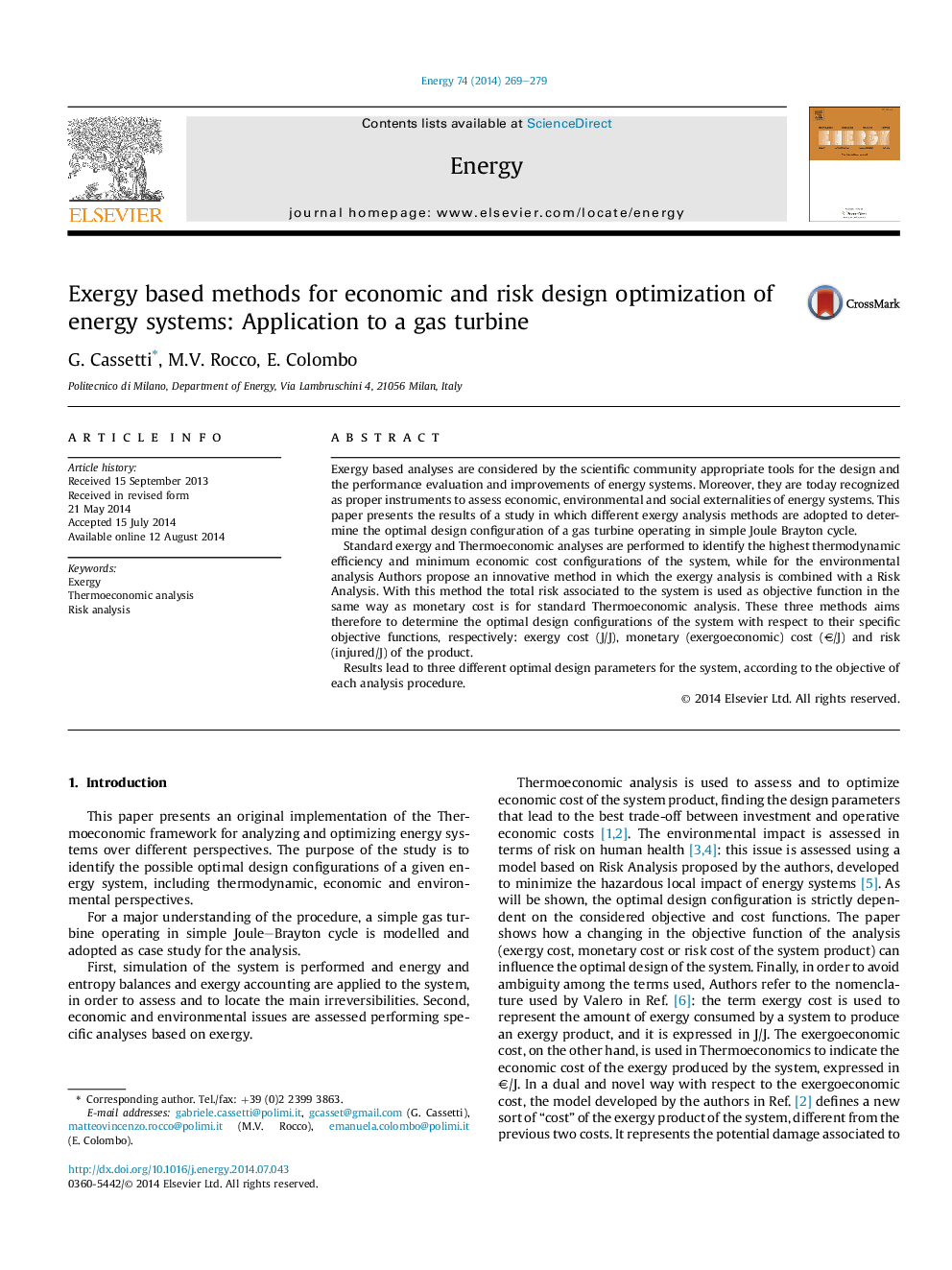| Article ID | Journal | Published Year | Pages | File Type |
|---|---|---|---|---|
| 1732461 | Energy | 2014 | 11 Pages |
•An original implementation of Thermoeconomic framework is proposed.•Standard Exergy and Thermoeconomic analysis are performed on a case study.•A new model using exergy as allocation criteria for Risk Analysis is performed.•Different optimal configurations are obtained and compared.
Exergy based analyses are considered by the scientific community appropriate tools for the design and the performance evaluation and improvements of energy systems. Moreover, they are today recognized as proper instruments to assess economic, environmental and social externalities of energy systems. This paper presents the results of a study in which different exergy analysis methods are adopted to determine the optimal design configuration of a gas turbine operating in simple Joule Brayton cycle.Standard exergy and Thermoeconomic analyses are performed to identify the highest thermodynamic efficiency and minimum economic cost configurations of the system, while for the environmental analysis Authors propose an innovative method in which the exergy analysis is combined with a Risk Analysis. With this method the total risk associated to the system is used as objective function in the same way as monetary cost is for standard Thermoeconomic analysis. These three methods aims therefore to determine the optimal design configurations of the system with respect to their specific objective functions, respectively: exergy cost (J/J), monetary (exergoeconomic) cost (€/J) and risk (injured/J) of the product.Results lead to three different optimal design parameters for the system, according to the objective of each analysis procedure.
